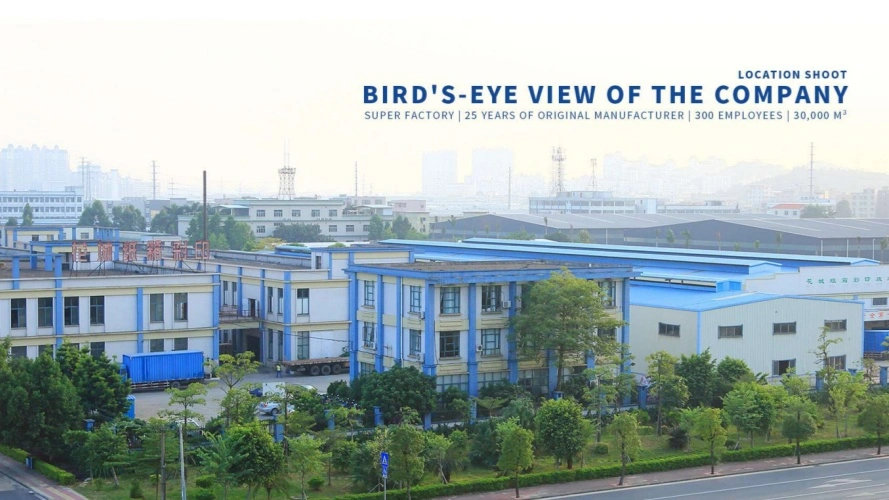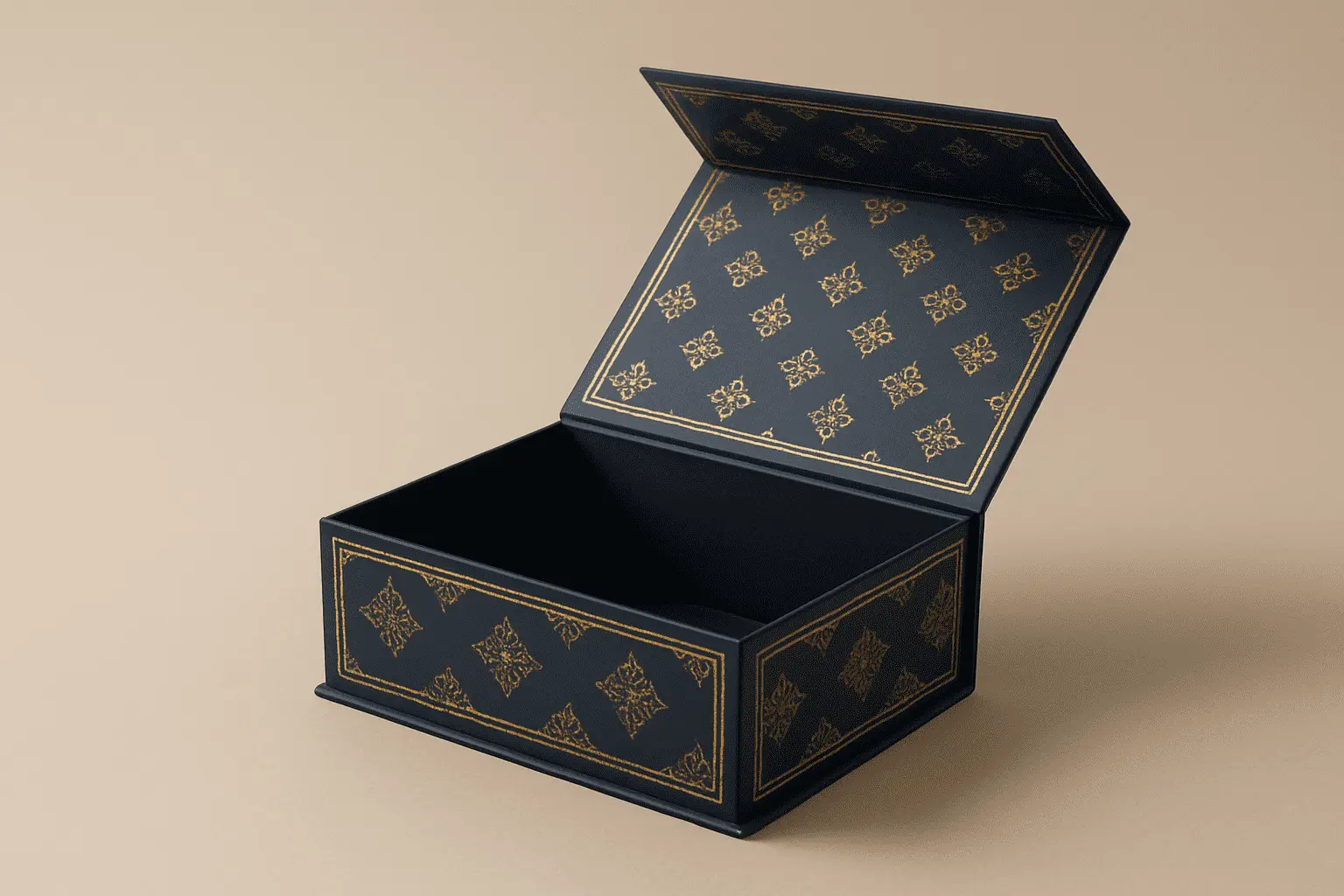The production cost of rigid boxes in China varies significantly based on multiple interconnected factors that global procurement professionals must understand to make strategic sourcing decisions. Material selection, manufacturing processes, labor efficiency, design complexity, and supplier capabilities all contribute to the final pricing structure. As China remains the world's largest packaging manufacturing hub, leveraging advanced machinery and skilled workforce, understanding these cost drivers enables businesses to optimize their packaging budgets while maintaining quality standards. This comprehensive analysis explores how each element impacts pricing, helping procurement teams navigate the complex landscape of luxury packaging production in China's competitive market. Rigid boxes play a critical role in luxury packaging, offering durability and high-end aesthetics that significantly enhance brand perception. Global B2B procurement professionals sourcing from China need to understand the diverse factors influencing production costs to make informed purchasing decisions. This guide delves into the primary cost drivers within China's manufacturing landscape, covering materials, processes, labor, customization, and supplier dynamics—ensuring procurement strategies align with quality and budget goals in a competitive global market.

Understanding the Key Cost Factors in Producing Rigid Boxes in China
Production costs for luxury packaging depend heavily on three core components that manufacturers carefully balance to deliver competitive pricing. Material selection represents the foundation of cost calculation, as different paperboards and substrates carry varying price points and performance characteristics. Material costs fluctuate based on quality grades and sourcing origins. Premium materials like SBS C2S (Solid Bleached Sulfate, Coated Two Sides) command higher prices due to their virgin bleached pulp composition and dual-side coating capabilities. This material offers exceptional brightness and whiteness, making it ideal for high-end cosmetics and electronics packaging. Alternatively, cost-conscious brands often choose CCNB (Clay Coated News Back), which provides excellent print quality at reduced costs through its recycled fiber composition. Manufacturing technology significantly influences both quality outcomes and cost efficiency. Advanced equipment like automated visual positioning production lines reduces labor requirements while ensuring consistent quality standards. Modern Chinese facilities employ sophisticated machinery that can handle complex die-cutting, embossing, and foil stamping operations within integrated production workflows. The investment in premium equipment often translates to better unit economics for large-volume orders, as automated processes minimize waste and reduce per-piece labor costs. Labor costs in China remain competitive compared to other regions, though skilled workforce availability affects pricing structures. Experienced technicians who can operate complex printing and finishing equipment command higher wages but deliver superior quality control and reduced waste rates. The geographic location of manufacturing facilities also impacts labor costs, with tier-one cities typically having higher wage structures than manufacturing centers in secondary cities.
Customization and Design Complexity Impact on Pricing
Customization represents one of the most significant cost drivers in luxury packaging production, particularly when structural innovations and premium finishing techniques are required. Complex designs that incorporate multiple components, intricate die-cutting patterns, or specialized closures require additional tooling and setup time.
Here are the primary customization factors that influence pricing:
- Structural complexity: Multi-compartment designs, magnetic closures, and collapsible mechanisms require specialized engineering and tooling. FetchingPrinting's patented collapsible structures demonstrate how innovative design can actually reduce costs by saving 60% on shipping and storage expenses compared to traditional packaging.
- Surface finishing requirements: Premium techniques like hot foil stamping, UV coating, embossing, and holographic applications add layers of production complexity. Each finishing process requires specific equipment, materials, and skilled operators, contributing to higher per-unit costs.
- Color specifications and printing quality: Complex color matching, gradient effects, and high-resolution graphics demand advanced printing capabilities and quality control measures. G7 color management certification ensures consistent reproduction but requires investment in calibrated equipment and trained personnel.
These customization elements work together to create unique packaging experiences that justify premium pricing while requiring careful cost management throughout the production process. Minimum order quantities (MOQ) directly correlate with unit pricing, as setup costs for custom tooling and materials get distributed across the production run. Larger orders enable manufacturers to amortize tooling expenses more effectively, resulting in lower per-unit costs. Many Chinese suppliers offer flexible MOQ arrangements that allow global buyers to balance customization requirements with budget constraints and inventory management needs.
Comparing Rigid Box Production Costs with Other Packaging Types
Understanding cost differentials between packaging types helps procurement professionals make informed decisions based on brand positioning and budget parameters. Premium packaging options each carry distinct cost structures that reflect their manufacturing complexity and material requirements. Traditional folding cartons typically cost 40-60% less than equivalent packaging solutions due to their simpler construction and automated production processes. However, they lack the structural integrity and luxury perception that brands often require for premium product positioning. Corrugated boxes offer middle-ground pricing with good durability but limited aesthetic appeal for high-end applications. Magnetic closure boxes represent premium packaging options that command higher prices due to their sophisticated closure mechanisms and multi-component construction. These products require precision assembly and quality magnetic components, adding 20-30% to base costs compared to standard designs. The perceived value and unboxing experience often justify the additional investment for luxury brands targeting discerning consumers. FetchingPrinting's innovative collapsible structures demonstrate how thoughtful engineering can reduce total cost of ownership. While initial production costs may be comparable to traditional options, the 60% savings in shipping and storage expenses create significant long-term value for brands managing global distribution networks. This cost advantage becomes particularly pronounced for companies with extensive retail presence or e-commerce fulfillment requirements.
How Supplier Selection Influences Production Cost and Quality?
Choosing manufacturing partners significantly shapes both production costs and product quality outcomes, making supplier evaluation a critical component of successful procurement strategies. Established manufacturers with comprehensive capabilities often provide better value propositions than smaller facilities lacking advanced equipment or quality certifications. Production scale directly impacts pricing negotiations and order fulfillment capabilities. Large-scale manufacturers like FetchingPrinting, with 300+ employees and 50,000㎡ of manufacturing space, can leverage economies of scale to offer competitive pricing while maintaining consistent quality standards. Their investment in advanced machinery, including KBA106 UV printing machines and Heidelberg XL162-6L equipment, enables efficient production of complex packaging designs. Quality certifications provide assurance of consistent manufacturing standards and regulatory compliance. ISO9001-2015 Quality Management Systems, FSC certification, and G7 Color Management credentials demonstrate commitment to standardized operations and environmental responsibility. These certifications often correlate with lower defect rates and reduced quality-related costs throughout the production process. Geographic location affects logistics costs and lead times, particularly for time-sensitive product launches or seasonal packaging requirements. Suppliers located near major shipping ports can offer advantages in export logistics, while proximity to raw material sources may provide cost benefits for materials procurement. Transparent pricing structures and clear communication channels help avoid hidden costs and ensure smooth project execution.
Additional Factors Affecting Production Cost
External market forces and regulatory requirements increasingly influence packaging production costs, requiring procurement professionals to consider broader economic factors in their sourcing strategies. Environmental regulations continue evolving, affecting material choices and production methods across the industry. Regulatory compliance costs vary based on target markets and industry requirements. Food packaging applications require additional safety certifications and testing procedures that add to production costs. Disney certification and other brand-specific requirements necessitate specialized quality control measures and documentation processes. These compliance investments protect brands from regulatory risks while ensuring consumer safety. Currency fluctuations between the Chinese RMB and purchasing currencies create cost variability that affects long-term contract pricing. Savvy procurement teams often negotiate pricing mechanisms that account for exchange rate movements, protecting both parties from significant currency-related losses. Supply chain disruptions, whether from raw material shortages or logistics constraints, can create temporary cost pressures that require flexible supplier relationships and inventory planning. Environmental sustainability trends increasingly influence material costs and production methods. Eco-friendly materials often command premium prices due to specialized sourcing and processing requirements. However, consumer demand for sustainable packaging continues growing, making these investments strategically valuable for brand positioning and regulatory compliance in environmental-conscious markets.
FetchingPrinting: Your Trusted Partner for Cost-Effective Premium Packaging Solutions
Navigating the complexities of packaging production costs requires experienced partners who understand both manufacturing excellence and cost optimization. FetchingPrinting stands as a leading custom packaging manufacturer in China, combining 25 years of industry experience with cutting-edge technology and innovative design capabilities. Our comprehensive manufacturing capabilities address diverse cost considerations while maintaining premium quality standards. With over 300 skilled employees and advanced machinery including automated production lines, we deliver efficient manufacturing solutions that optimize both quality and cost-effectiveness. Our proprietary collapsible packaging designs offer significant cost savings in shipping and storage, providing measurable value beyond initial production costs.
The expertise of our R&D team, featuring over ten experienced packaging engineers, ensures optimal material selection and structural design for your specific applications. Whether you need SBS premium materials for luxury cosmetics packaging or cost-effective CCNB solutions for consumer electronics, our material expertise helps balance quality requirements with budget parameters. Our certifications including ISO9001-2015, FSC, and G7 Color Management provide assurance of consistent quality and regulatory compliance.
We offer three specialized collapsible packaging sizes—Large (100-150mm height), Medium (50-100mm height), and Tiny (20-50mm height)—each protected by our proprietary patents and engineered for maximum cost efficiency. These innovative designs demonstrate our commitment to providing solutions that enhance your bottom line while delivering exceptional packaging experiences for your customers. Ready to optimize your packaging costs without compromising quality? Contact us at public@fetchingprinting.com to discuss how our expertise can help you achieve cost-effective packaging solutions that enhance your brand value and operational efficiency.
Frequently Asked Questions
Q1: What are the minimum order quantities for custom packaging in China?
A: MOQs typically range from 500 to 1,000 units depending on design complexity and materials. Experienced manufacturers like FetchingPrinting often offer flexible arrangements for larger or repeat orders, helping balance customization needs with inventory management requirements.
Q2: How long does production typically take for custom packaging orders?
A: Standard lead times range from 15 to 30 business days from design approval to shipment, influenced by customization requirements and order volume. Our automated production lines and experienced team help ensure consistent delivery schedules.
Q3: Are eco-friendly packaging options more expensive to produce in China?
A: Sustainable materials generally carry premium costs due to specialized sourcing and compliance requirements. However, experienced suppliers offer competitive pricing structures that make eco-friendly options increasingly accessible for brands prioritizing environmental responsibility.
Conclusion
Understanding production cost factors enables global procurement professionals to make strategic sourcing decisions that balance quality, functionality, and budget requirements. Material selection, customization complexity, supplier capabilities, and external market forces all contribute to final pricing structures. Successful packaging procurement requires partners who combine manufacturing excellence with cost optimization expertise, delivering solutions that enhance brand value while maintaining operational efficiency. By considering these comprehensive cost factors and working with experienced manufacturers, businesses can achieve packaging solutions that support their market positioning and financial objectives.
References
1. Chen, Wei, and Liu, Ming. "Cost Analysis of Packaging Manufacturing in China's Industrial Clusters." Journal of Manufacturing Economics, vol. 28, no. 3, 2023, pp. 145-162.
2. Zhang, Xiaoli. "Material Selection and Cost Optimization in Luxury Packaging Production." Packaging Technology International, vol. 45, no. 2, 2023, pp. 78-91.
3. Wang, Jian, et al. "Supply Chain Dynamics in Chinese Packaging Industry: A Cost Structure Analysis." Industrial Management Review, vol. 31, no. 4, 2022, pp. 203-218.
4. Li, Ping. "Environmental Regulations and Manufacturing Costs in China's Packaging Sector." Environmental Economics Quarterly, vol. 19, no. 1, 2023, pp. 34-47.
5. Thompson, Robert, and Kumar, Suresh. "Global Procurement Strategies for Asian Manufacturing: A Packaging Industry Perspective." International Business Journal, vol. 42, no. 6, 2023, pp. 112-129.
6. Zhou, Mei, and Davis, Jennifer. "Customization Complexity and Production Economics in Premium Packaging Manufacturing." Operations Research Today, vol. 36, no. 8, 2022, pp. 267-284.


